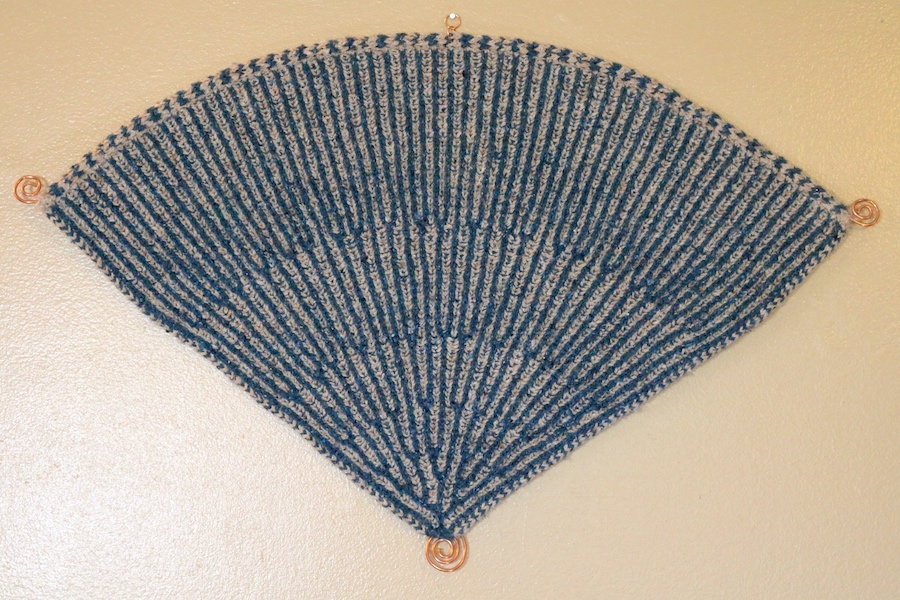A Tree for Virahanka
Berroco Remix Light, copper wire
2021
Fundamental Regions: The Math/Art of Susan Goldstine, Boyden Gallery, St. Mary's College of Maryland, January - March 2022

A standard increase in two-color brioche knitting splits a line of main-color stitches into two branches. The companion works A Tree for Virahanka and Virahanka’s Thoughts Overflow feature a simple recursive branching rule in which the numbers of branches at each level are the Virahanka sequence, also known as the Fibonacci numbers. In A Tree for Virahanka, the branchings occur at the Fibonacci levels, so that the length of the knit rows grows proportionately to the height of the knitting. Thus, the fabric lies flat and occupies a sector of a circle. By contrast, the branchings in Virahanka’s Thoughts Overflow are evenly spaced, so that the length of the rows grows roughly exponentially, giving the fabric a flared form. The number of knitted rows in each work is the same.
I used the same recursive branching structure in the 2015 work Fibonacci Downpour. The generation rule appears in the Bridges 2016 proceedings paper A Recursion in Knitting.